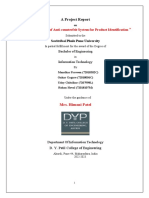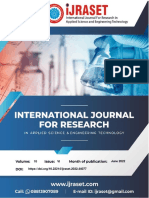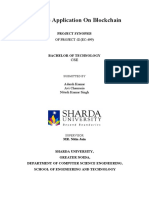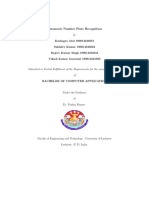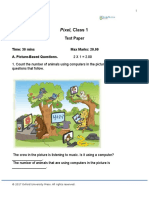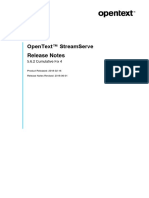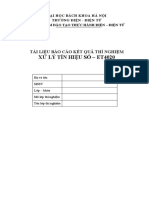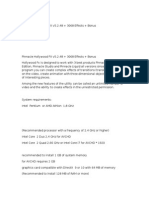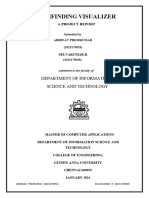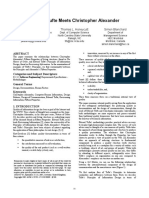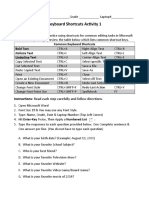MID TERM PRESENTATION ON
“ Automatic Fake Product Detection
Using ML ”
By
Roll No Name Group No. - 30
01 Tejaswini Bharade
02 Srushti Shinde
03 Kusum Lohar
04 Devayani Shenavi
05 Aditya Shinde
Under Guidance Of
Prof. S.B.Patil
D.Y.Patil College of Engineering and Technology, Kolhapur
Department of Computer Science and Engineering
Academic Year: 2024-25
�Overview
• Introduction
• Need Of Work
• Problem Statement
• Objectives
• System Architecture
• Modules
• Hardware and Software Requirements
• Module Implementation
• Remaining Work
• Conclusion
• Reference
� Introduction
• With the growth of online shopping and global trade, the problem of fake products
has become more serious, putting consumers, brands, and economies at risk.
• Fake goods harm consumer trust and cause financial losses.
• These fake goods not only damage consumer trust but also cause big financial
losses for honest businesses.
• Traditional methods of spotting fake products, like manual inspections and checking
serial numbers, often fall short because they can be slow, costly, and prone to human
mistakes.
�Literature Survey
• Pathak, A., Velasco, C., & Calvert, G.:
Explores how consumers identify fake products using word recognition and logo visual similarity.
• Eduard Daoud, Dang Vu Nguyen Hai, Martin Gaedke, and Hung Nguyen
Proposes a machine learning-based system for consumers to verify counterfeit products using image and text recognition
• R. Roy & Patil. S
Develops a mobile app with Naïve Bayes and CNN to detect fake product logos.
�Need Of Work
·
• Consumer Safety
• Economic Impact
• Brand Reputation
• Ease of Use
• Rising Counterfeit Trends
�Problem Statement
Fake products are hurting consumer trust and costing businesses a lot of money. Traditional
methods to find fakes don't work well, so this project will create a machine learning model to
quickly and accurately spot counterfeit goods, protecting both consumers and brands.
�Objectives
• To develop a machine learning model that accurately detects counterfeit products using barcode
verification.
• To implement text recognition techniques for identifying discrepancies in product labelling.
• To detect and verify product logos using image processing and deep learning methods.
• To develop cost-effective methods for detecting fake products.
�System Architecture
�Modules
1. Barcode Detection
2. Text Recognition
3. Logo Detection
4. Verification and Results
�System Requirements
• Software Requirements
1. Operating System : ·Windows 10/11
2. Programming Language:·Python (version 3.7 or higher)
3. Libraries: Tkinter, Numpy, nltk, pyzbar, pytesseract
4. Algorithms: OCR
• Hardware Requirements
Development Machine:
1. Processor: Intel Core i5/i7
2. RAM: 8 GB
�Modules Implemented
• Successfully developed and implemented an interactive user interface for capturing images in the
Fake Product Detection project.
� Modules Implemented
Barcode Scanner Module: This module scans and decodes barcodes to retrieve product details or encoded data efficiently.
It ensures quick and accurate data extraction for seamless processing.
Text Processing Module: This module extracts and processes text from images using OCR (Optical Character Recognition).
It enables the conversion of image-based text into editable and searchable formats.
�Future Work
• Final Testing and Deployment: Complete end-to-end testing and deploy the system.
� Conclusion
The machine learning-based fake product detection system successfully identified counterfeit
goods with high accuracy, proving its effectiveness in combating counterfeit markets. By
analyzing product features, the model distinguishes genuine items from fakes, helping to protect
both consumers and brands. While the system performed well, ongoing improvements and
adaptation to new counterfeit methods are essential for maintaining its effectiveness. This
project highlights the potential of machine learning in enhancing product authenticity and
safety.
� Reference
s
[1] Al-Bahri, Mahmood, et al. "Smart system based on DOA & IoT for products monitoring & anti-
counterfeiting." 2019 4th MEC International Conference on Big Data and Smart City (ICBDSC).
IEEE, 2019.
[2] Jadhav, Roshan, et al. "System for Identifying Fake Product using Blockchain Technology."
2022 7th International Conference on Communication and Electronics Systems (ICCES). IEEE,
2022.
[3] R. Roy & Patil. S (2021). Fake Product Monitoring System using AI available at IEEEs.
[4] Rossler, A., Rue back, C., & Thies, J. (2019). Face Forensics++: Learning to Detect Manipulated
Facial Images. Proceedings of the IEEE International Conference on computer.







